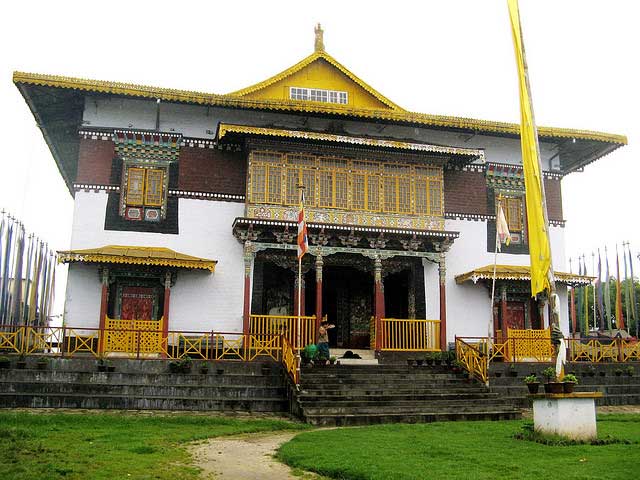Located around 140 kilometres west from gangtok, Sikkim, the monastery was founded in 1705 by Lama Lhatsun Chempo, and is one of the oldest monasteries in Sikkim. The monastery was built for “pure monks” (ta-tshang) meaning “monks of pure Tibetan lineage“, celibate and without any physical abnormality. This practice is still retained. Only the monks of Pemayangtse Monastery are entitled to the title “ta-tshang”.

The head lama of this monastery had the unique privilege of anointing the Chogyals of the erstwhile monarchy of Sikkim with holy water. The monastery is built at an elevation 2085 metres, with the backdrop of 2 mountains on either side. The building has 3 stories; the 1st floor has a notable collection of ancient Buddhist antique idols, scriptures as well as sculptures and decorated paintings.
Padmasambahva’s eight incarnations in fierce form are also seen here. Of particular note is a seven-tiered painted wooden structure, portraying Guru Rimpoche’s Heavenly Palace known as “Sanghthokpalri” on the top floor of the monastery. The painting has scenes of rainbows, angels with “whole panoply of Buddhas and Bodhistvas”. This structure was constructed by Dungzin Rimpoche over a period of 5 years. One of the chief attractions in this monastery that must be witnessed is the Chaam festival held here around the end of February every year.
The festival marks the conclusion of the Tibetan New Year, and a large embroidered scroll is revealed on the last day of the festival accompanied with fireworks. There are a 108 monks in the monastery and are identified by the red hats they wear.

